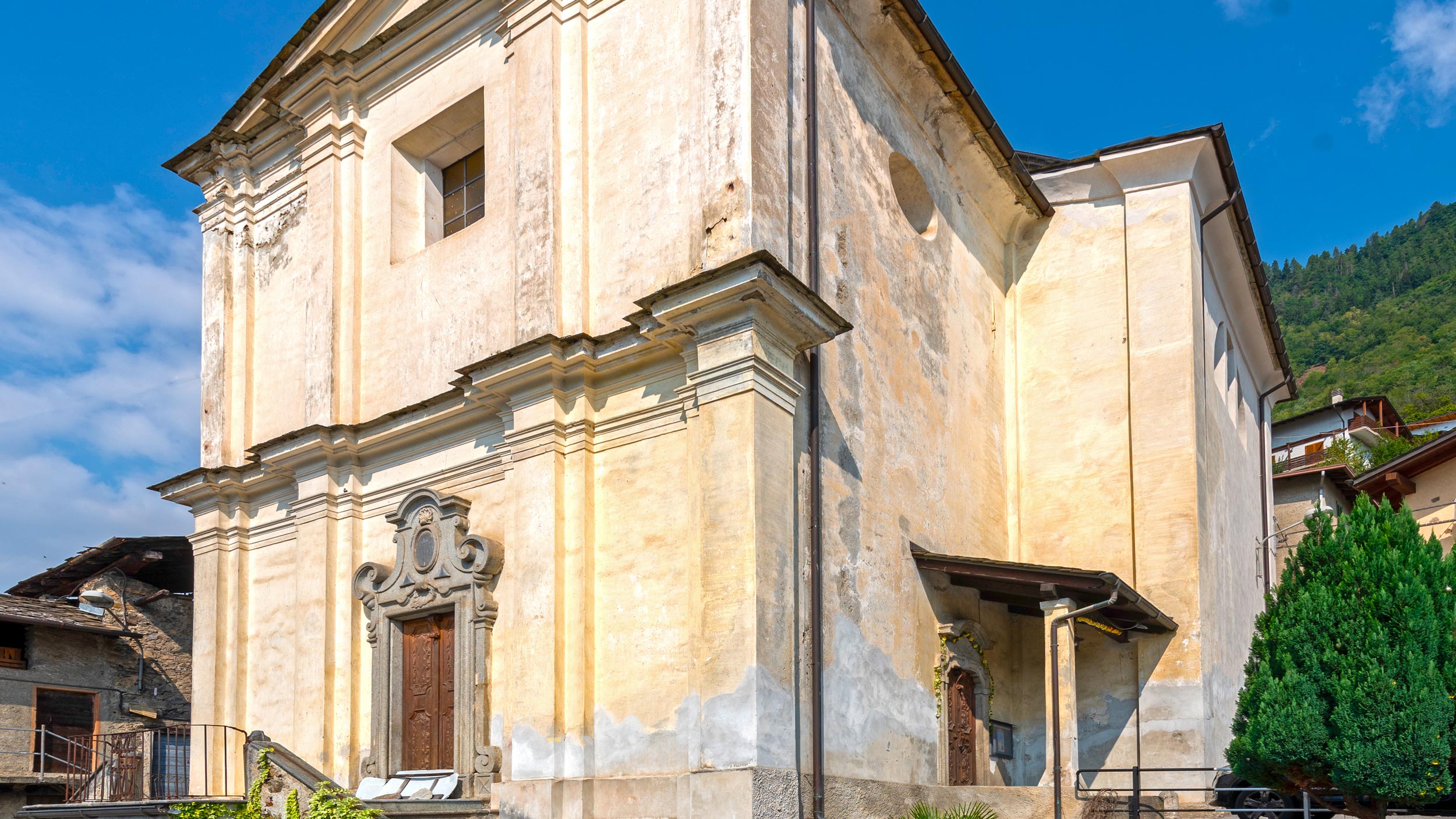Street Madonnina, 435, 23020 Montagna in Valtellina SO
The amphitheater of vineyards encircling Sondrio is extraordinarily beautiful, shaped into terraces by the tireless work of the mountain folk who had little land on the valley floor and built kilometers of mortarless retaining walls to carve out patches of arable land on the slopes.
After passing through the sun-drenched vineyards of Ponchiera, you reach the village of Montagna, with its scattered contrade. Each of these hamlets has built a small church sometime in the past centuries to meet the spiritual needs of the locals.
At the beginning of the 18th century, the contrada of Massarescia, mentioned in documents dating to the mid-13th century, was the only one still without a church. Up to then, the devotion of the inhabitants focused on a fresco of the Enthroned Madonna and Child on the external wall of an old house. This image was removed and placed on the main altar of the new church, built starting in 1713.
To get a feeling for the old rural hamlet, be sure to go around behind the church to enjoy the shade and silence. Meanwhile, the lavoir at the edge of the parvis, no longer serving its original function, is now an ideal gathering spot for the the local community. It affords an excellent view of the valley, where you will easily distinguish the ruins of Castel Grumello, built in the late 13th century to guard the Sondrio basin.
The church of the Madonna di Caravaggio, known as the “chiesa della Madonnina”, stands on sloping land: the main entrance is accessed by climbing a double flight of stairs, which cover a reproduction of the grotto of Our Lady of Lourdes, added in 1929. The irregular profile of the main portal in granite is typical of the period (1731) and replicated in the side entrance.
The inside walls are painted with faux altars (c. 1744), youthful works by Ferdinando Crivelli of Milan, whose more mature works are found in other churches along the Cammino mariano (Ponte and Grosotto). The trompe-l’oeil altars were clearly the fashion at the time, but six of them in a small contrada church suggests patrons who were quite open to innovative solutions. Joining in the overall harmony of the interior are paintings attributed to the Valtellina painter Alessandro Parravicini, accustomed to working alongside Crivelli.
The only “real” altar is the one dedicated to Saint Joseph in red and black marble and light-colored inserts, dating to 1741. Historical documents tell of a grand banquette organized in 1742 to celebrate the placement of the wooden statue of the saint in the niche.







